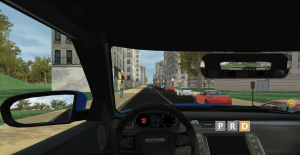What kind of driver will your teenager be?
That has to be among the most important questions on the minds of young parents. Perhaps you believe if you’re a good driver, your teenager will be the same. That may be wishful thinking. How do you know? There are apps to track teen driving, but that information only tells you how well they did after the fact. What you really want to know is how well they’re going to do before they get out there on the road!
Relax! Someone who feels your pain is doing something about it. Julie Jargon, writing for The Wall Street Journal, says researchers at Children’s Hospital of Philadelphia built a virtual driving assessment—essentially a realistic car simulator—and found that it can accurately predict crash risk in newly licensed drivers. Why did a hospital do this? Because driving is one of the most important healthcare issues for teenagers.
Here are some statistics to make you nervous. Drivers between the ages of 15 and 20 made up just 5% of all licensed U.S. drivers in 2021, but accounted for 8.4% of fatal traffic crashes, according to the National Highway Traffic Safety Administration. The Centers for Disease Control and Prevention identified vehicle crashes as the leading cause of deathfor U.S. teens.
The researchers aren’t keeping the test to themselves. They have brought the tests to doctor’s offices in Pennsylvania and parts of New Jersey and Connecticut, as well as to traffic courts in Ohio. They are also seeking funding to offer them to teens in other states as part of their routine medical checkups.
How does it work?
To take the test, a teen sits at a desk with a driving wheel, brake pedal and gas pedal, all attached to a laptop running assessment software. “Grand Theft Auto” it isn’t, but it does have a realistic feel.
The 15-minute test is a simulated drive through a city where teens encounter pedestrian-filled crosswalks, railroad crossings and other potentially dangerous scenarios. Exposing them to possible crashes is a good way to see how they respond to real-life road crises, say researchers. Eye-tracking software analyzes where teens are looking while they drive down the virtual streets.
Peyton Leverich, a 15-year-old in Lansdowne, Pa., took the virtual driving assessment at her church in November. Turns out, she drives too fast on straightaways. She also needs to pay more attention to the speed and distance of oncoming cars when she’s making left turns. “It felt very realistic. Lots of people were crossing the street and there were school zones where you had to drive slower,” says Peyton, who plans to take driving lessons before trying to get her license. (Pennsylvania requires driving experience but not professional driving lessons to obtain a license. Personally, I took the Pennsylvania driving test at the Pennsylvania Highway Patrol driving course 56 years ago in a stick-shift car – and passed the first time!)
In an early study, nearly 17,000 young drivers in Ohio took this virtual assessment between July 2017 and December 2019. During the study, the tests were administered at motor-vehicle branches just before the young drivers took their license exams, though it wasn’t part of the exam. Once the drivers got their licenses, the researchers monitored state police crash-report records for the subsequent year, and compared how well the test-takers did. The kids who drove best ended up having a 10% lower-than-average crash risk. The ones who experienced major issues had an 11% higher-than-average chance of getting into a wreck.
The study, conducted by the Children’s Hospital of Philadelphia researchers along with colleagues from the University of Pennsylvania and the University of Michigan—with funding from the state of Ohio and other donors was published in the journal Pediatrics in October this year.
This spring, the researchers plan to study which interventions, such as behind-the-wheel training or online driver education, are most effective in helping teens improve driving skills. They hope to offer the virtual assessments in doctor’s offices around the country, where teens approaching driving age could take them as part of their annual checkups, just as they take vision exams.
“My dream is to start treating car crashes as the health risk they are for teens,” says Flaura Winston, a co-author of the study and one of the developers of the virtual-assessment software. “We want it to be part of routine preventative adolescent healthcare.”
Sounds like a great idea for young drivers – and for parents, too!


